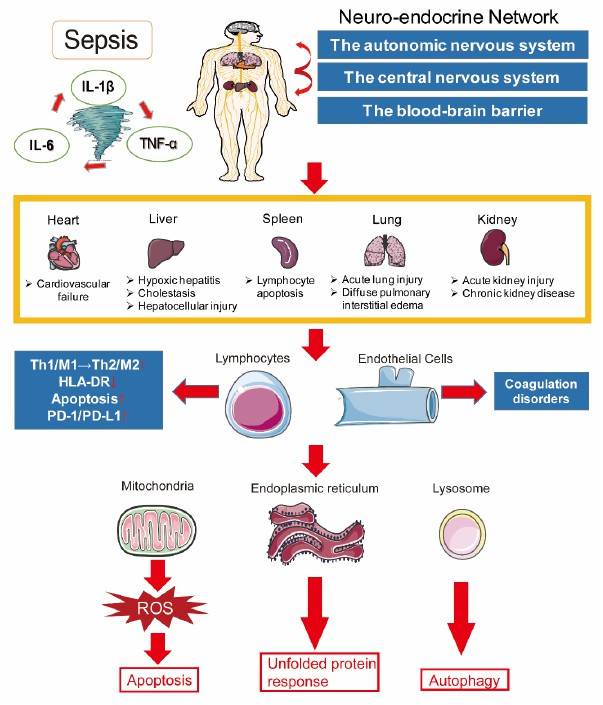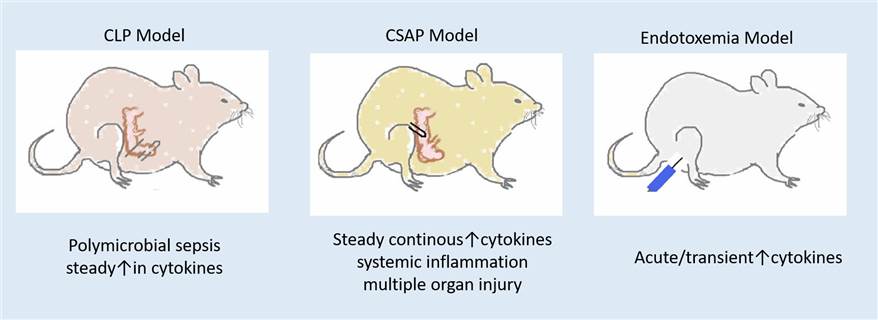Sepsis Model
Creative Bioarray stands out as a trusted pioneer in the industry, specializing in the meticulous development of animal models that mimic human diseases. We pride ourselves on our unparalleled expertise and commitment to precision, ensuring that our models are as accurate and representative as possible. By leveraging our extensive experience and cutting-edge techniques, we have developed a range of sepsis animal models that are tailored to meet the specific needs of our clients. Whether you're interested in exploring new therapeutic approaches or gaining a deeper understanding of the disease, our models can provide the foundation for your research.
Sepsis is a serious complication of infection, caused by the presence of bacteria within the blood, and when left untreated can lead to a systemic immune response including; tissue damage, multiple organ failure, and systemic immune response syndrome. Despite recent therapeutic progress, the incidence and mortality rates of sepsis continue to soar, highlighting the urgent need for further research and innovation.
Unlike localized and straightforward infections, sepsis represents a profound disruption of the intricate immunological balance between inflammation and anti-inflammation. Moreover, sepsis is not merely a systemic inflammatory response or immune dysfunction; it encompasses perturbations in the functionality of multiple organs throughout the body. At the cellular and molecular levels, the pathogenesis of sepsis is incredibly intricate, encompassing imbalances in inflammatory responses, immune dysfunction, mitochondrial injury, coagulation abnormalities, neuroendocrine immune network dysregulation, endoplasmic reticulum stress, autophagy, and various other pathophysiological processes.
 Fig. 1 The complex pathogenesis of sepsis
Fig. 1 The complex pathogenesis of sepsis
Our Animal Models of Sepsis
Animal models play a crucial role in sepsis research, as they provide a controlled and predictable environment to study the complex pathophysiological processes involved in this condition. At Creative Bioarray, we have extensive experience in developing and establishing stable sepsis models tailored to meet the specific needs of our clients. By using our sepsis models, clients can gain a deeper understanding of the pathogenesis of sepsis, identify potential therapeutic targets, and evaluate the efficacy of novel treatment strategies.
- Cecum Ligation and Puncture (CLP)-Induced Sepsis Model
- Colon Ascendens Stent Peritonitis (CASP)-Induced Sepsis Model
- Lipopolysaccharide (LPS)-Induced Sepsis Model
 Fig. 2 Our animal models of sepsis
Fig. 2 Our animal models of sepsis
Quotation and Ordering
Creative Bioarray is a reputable CRO partner known for its advanced technology platforms and experienced research teams. We take pride in providing cost-effective studies with high-quality results and competitive prices. If you are interested in our services, please feel free to contact us at any time or submit an inquiry to us directly.
References
- Kingsley, S.M.K., Bhat, B.V. Differential paradigms in animal models of sepsis. Current Infectious Disease Reports, 2016, 18: 1-11.
- Huang, M., et al. The pathogenesis of sepsis and potential therapeutic targets. International journal of molecular sciences, 2019, 20(21): 5376.
- Jarczak, D., et al. Sepsis—pathophysiology and therapeutic concepts. Frontiers in medicine, 2021, 8: 628302.